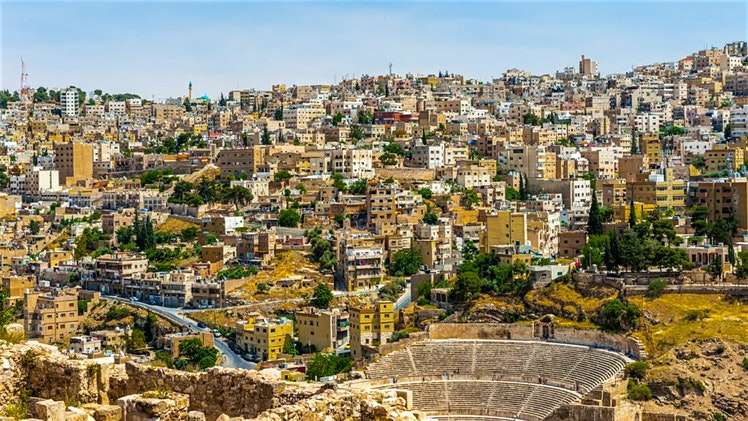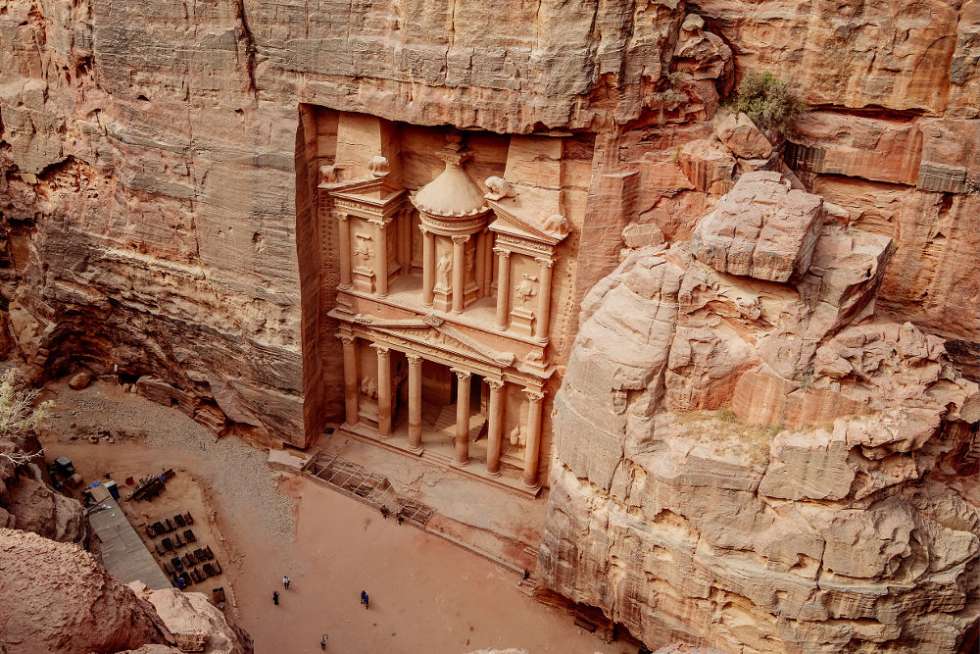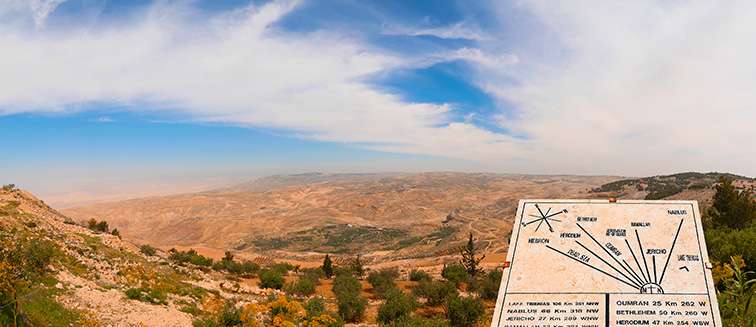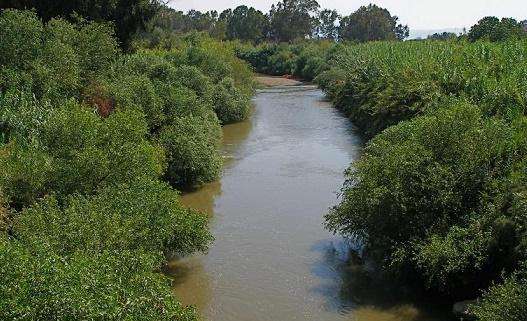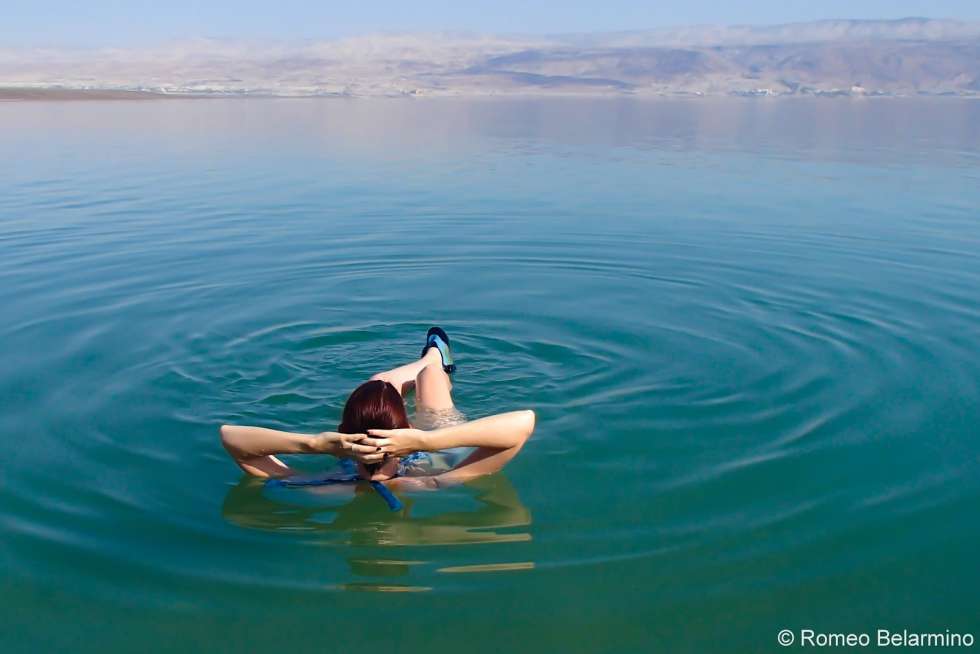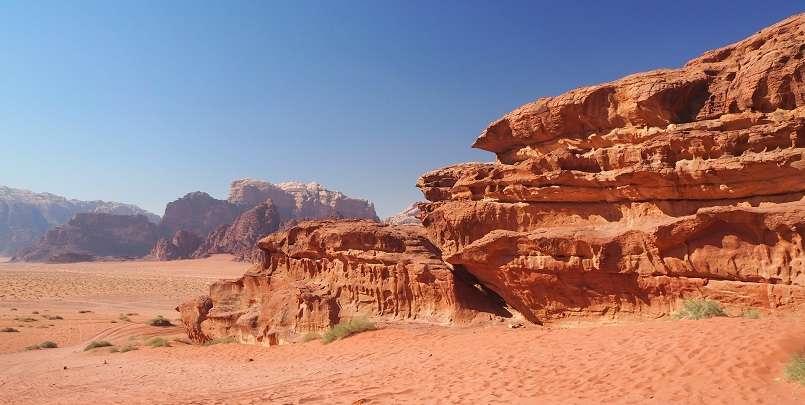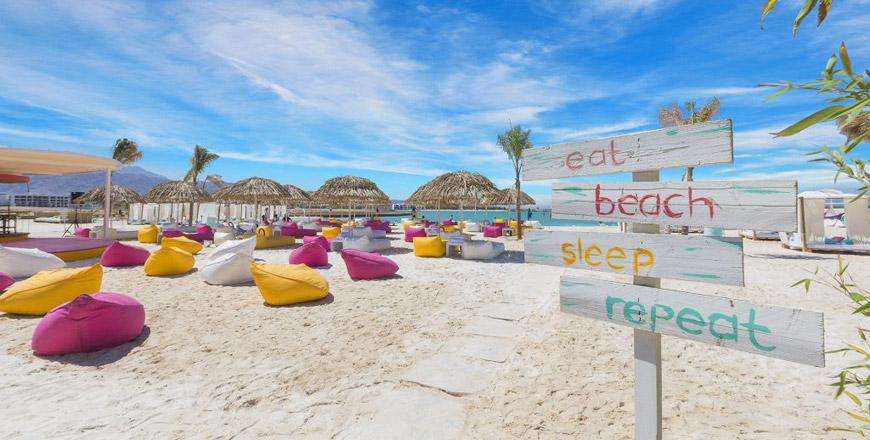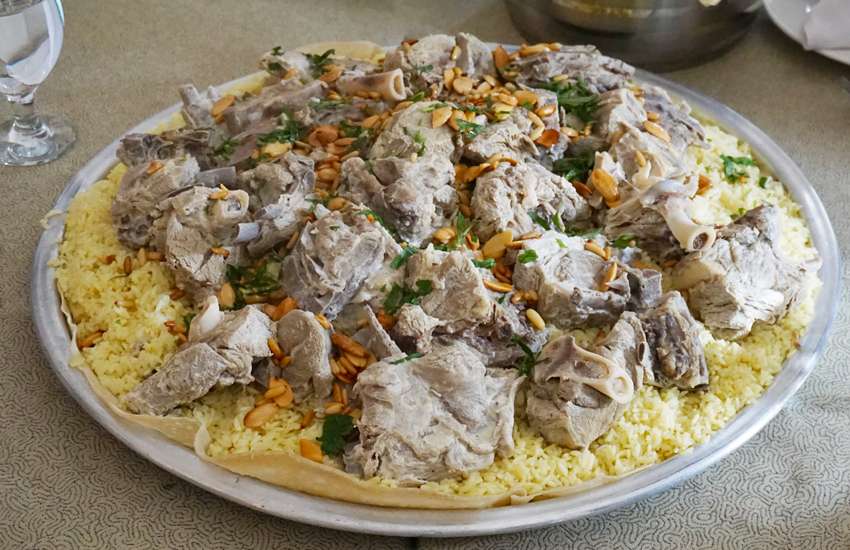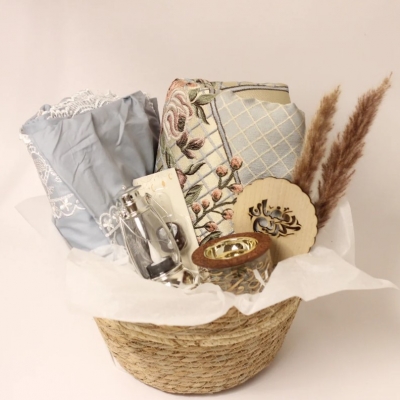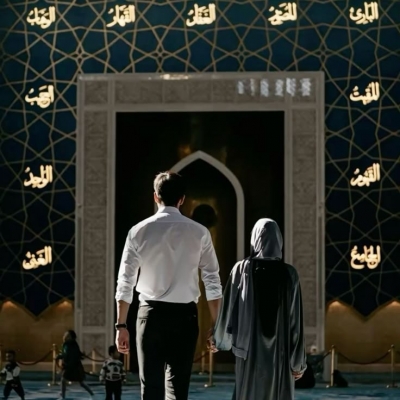Your Honeymoon Destination: Jordan
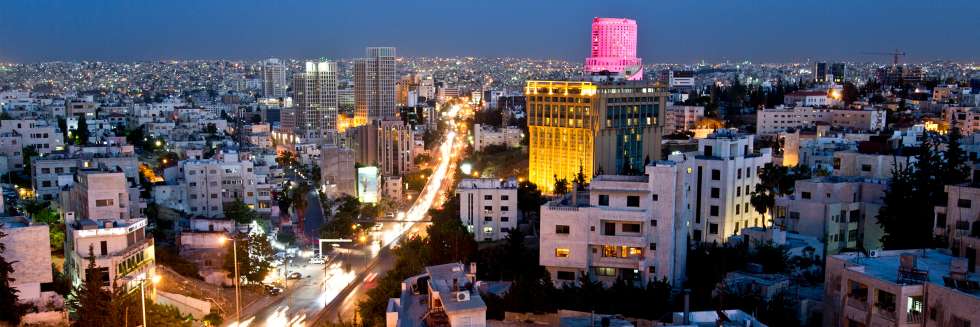
For those of you who don’t live in Jordan (and even those who do!) there are so many aspects of this magical country that you might not know about.
Jordan is known for its pleasant weather and sunny weather throughout the year. Spring in Jordan is known for its beautiful wild flowers and green land. Summer is sunny and summer nights are beautiful. And winter is the perfect time to visit Aqaba or the Dead Sea where it is a beat warmer. But we can easily say that Jordan is suitable for visiting all year round.
We have previously shared "Where to Go on a Date in Jordan"
Travel to Jordan
Traveling to Jordan does not require obtaining a visa for citizens of Gulf countries and some other Arab nations.
Tourism in Jordan
Tourism in Jordan is a diverse experience that blends history and authenticity with modernity, alongside the beauty of nature from the vast deserts to the charm of the beaches in the Gulf of Aqaba, where Jordan holds many hidden treasures for visitors to discover.
Jordan serves as a tourist destination for many travelers from around the world, thanks to its attracting and appealing factors that satisfy the aspirations of those coming from everywhere. Among the most prominent factors are its political stability, distinctive geography, breathtaking natural landscapes, and the historical heritage it contains.
Amman, the capital of Jordan, is considered one of the most important tourist cities in Amman, Jordan. It includes some of the best Jordan tourist attractions making it one of the most beautiful tourist cities in Jordan. Amman comprises many significant ancient ruins, malls, parks, entertainment venues, and more.
What do you think about visiting this unique country for your honeymoon? We will take you on a short journey to discover the top tourist attractions in Jordan and the historical and romantic locations in the Hashemite Kingdom.
Amman
Amman is the capital of the Hashemite Kingdom of Jordan. It is spread over 19 hills. There are so many different sides to Amman that you could explore.
Shopping in Amman: There are so many shops and markets you could visit across Amman, but one area you should explore is downtown! There are so many authentic shops that sell traditional Jordanian attire and so much more. Also, if you’re in Amman during the summer, be sure to check out Souk Jara, a seasonal flea market that we absolutely love! If you prefer to do your shopping indoors, don’t miss the opportunity to visit Amman’s beautiful malls, such as City Mall, Taj Mall, and Mecca Mall.
The Citadel: This archaeological landmark will take your breath away! Enjoy walking through the Roman ruins, and make sure you check the ruined temple of Hercules.
The Roman Amphitheater: This theater will take you 2,000 years back in time. It is also used for concerts, plays, and shows during the summer.
Turkish Baths: Enjoy a relaxing Turkish Bath in Al Pasha. You will love the relaxing ambience, body scrubs, and massages, as well as the delicious “Karkadeh” (Hibiscus Tea).
Jabal Al Webdeh: One of Amman's most popular and oldest neighborhoods, it is basically a mirror of how Amman once was. Enjoy walking and discovering the little boutiques and coffee shops around the area.
Rainbow Street: A popular street in Amman lined with restaurants and coffee shops, this street is a must-see! Rainbow Street, a location to some of the hottest spots in the Kingdom, is also where the aforementioned Souk Jara takes place.
Royal Automobile Museum in Jordan: The Royal Automobile Museum in Amman is one of the most important tourist attractions, showcasing a collection of cars once owned by the kings who ruled Jordan. The museum has evolved to house numerous rare cars and motorcycles, accompanied by archival photographs that narrate the history of the vehicles on display.
Abdali Boulevard: Abdali Boulevard stands out as a key tourist destination in Jordan, forming part of the Abdali Project. It boasts a vast area featuring a long promenade lined with buildings hosting various commercial outlets and international brands. Additionally, it encompasses several hotels and apartments, with Abdali Mall located at its end, renowned as one of Amman's premier malls. The mall hosts a variety of restaurants and cafes, adding to the allure of the boulevard.
Royal Tank Museum in Amman: The museum is part of Jordan's tourist areas, aiming to preserve military heritage and showcase the wartime history of the country, instilling a sense of pride and honor. Visitors have the opportunity to view heavy weaponry such as tanks and artillery, providing a unique insight into the military history of Jordan.
Petra
The city of Petra, the capital of the Nabataean Arabs, is renowned as one of the most iconic archaeological sites globally and a key tourist attraction in Jordan.
Located 262 kilometers south of Amman, Petra captivates visitors from all corners of the globe with its architecture carved into the pink rock, showcasing a blend of ancient architectural arts belonging to diverse civilizations.
This entire city sculpted in pink rock is an unforgettable experience, especially when the Treasury comes into view at the end of the Siq, a long passage leading to the entrance of the Rose City. In the evening, Petra exudes a romantic ambiance as more than 1,800 candles light up the city.
Key archaeological sites within Petra:
- Al-Siq: This main rock-hewn pathway leading to the city spans 1,200 meters in length, 3 to 12 meters in width, and rises 80 meters in height.
- The Treasury (Al-Khazneh): one of the most famous and significant landmarks in Petra, named for the Bedouin belief that it held treasure. The Treasury consists of two floors, each 39 meters in height and 25 meters in width, comprising three chambers.
- Petra Theater: One of the largest buildings in Petra, constructed in the first century AD, takes the form of a semi-circle and can accommodate up to ten thousand people.
- The Monastery (Al-Deir): dating back to the first half of the first century BC, the monastery consists of two floors and is a remarkable archaeological site within Petra.
Mount Nebo
Mount Nebo is one of Jordan's prominent mountains, situated approximately forty one kilometers from its capital. The nearest Jordanian province to Mount Nebo is Madaba. This elevated mountain overlooks the Dead Sea, the Jordan River Valley, Jericho, and the distant hills of Jerusalem. It is the site where Moses viewed the Holy Land of Canaan but never entered. According to the Bible, Moses died and was buried in Moab.
Over the years, Mount Nebo became a pilgrimage site for early Christians arriving from Jerusalem. In the fourth century AD, a small church was constructed to commemorate the life of Moses. Some stones from that church still remain in their original place within the wall surrounding the church's sanctuary. The church underwent expansion in the fifth and sixth centuries, evolving into the large church we know today. The church houses remarkable collections of Byzantine mosaic panels.
Outside the church compound stands a bronze serpent, symbolizing the brass serpent lifted by Moses in the desert, and a cross, representing the crucifixion of Jesus. Mount Nebo stands as a significant historical and religious site, offering breathtaking views and preserving the spiritual legacy of Moses.
Jordan River
The Jordan River stands out for its widespread fame, owed to its distinctive geography and its association with significant historical events. Flowing through the Great Rift Valley in southwestern Asia, the river runs in a geological depression, making it the lowest river in the world.
The Jordan River holds profound sanctity, featured prominently in the texts of Jewish and Christian scriptures. Numerous references and indications highlight the significance of the Jordan River, and its waters are considered sacred by all Christian denominations. It is in the waters of the Jordan that Jesus Christ was baptized, making the river a revered symbol and a site of religious pilgrimage for Christians worldwide.
The historical and spiritual significance of the Jordan River extends far beyond its geographical boundaries, embodying a sacred connection to diverse religious traditions.
Dead Sea
The Dead Sea stands as a stunning natural wonder, being the lowest point on Earth at approximately 427 meters below sea level. It is an ideal destination for both religious tourism and leisure under the radiant sun.
The experience at the Dead Sea seamlessly combines the pleasures of beach life with a journey through religious history. Here, you can bask in the sun, take a dip, or delve into the religious history of the region if you are interested in biblical matters.
The warmth of the Dead Sea's waters, inducing a profound sense of relaxation with its extreme salinity—roughly ten times higher than typical seawater—and its rich mineral content, including magnesium, sodium, potassium, bromine, and more, makes it the primary and fundamental attraction of the location.
These warm, mineral-rich waters, known for their high buoyancy, have been attracting visitors since ancient times, including notable figures such as King Herod and the Egyptian Queen Cleopatra. Visitors have long enjoyed the therapeutic benefits of the Dead Sea's black mud, which stimulates the body. They float effortlessly on the surface, fully relaxed, soaking in the therapeutic properties of these mineral-rich waters beneath the sun.
Enjoy your time in the lowest region on Earth, where oxygen levels increase by 6% and UV rays are safer. Pamper yourselves with the mineral-rich black mud and swim in the salty waters, and in just minutes, you'll experience softer and healthier skin. The Dead Sea has become a global destination for weddings, chosen by couples from around the world to celebrate their union, thanks to being one of the most captivating natural phenomena on Earth.
Check out:
Wadi Rum
Wadi Rum is the homeland of nomadic Bedouin tribes, a region of enchanting allure that provides both of you with complete serenity as you contemplate its sands, stars, and sun. It immerses you in a unique, contrasting experience with the vibrant ambiance of the capital, Amman.
The Nabataeans once inhabited this area in times gone by, and now it offers you the opportunity to immerse yourselves in vast, breathtaking landscapes stretching across the horizon. Enjoy the tranquility of the desert, a calming balm for the soul and mind. Wadi Rum awaits your discovery, captivating with its entrancing beauty, and has been listed as a UNESCO World Heritage Site since 1985.
Explore the mountains and desert valleys, relish the beauty of nature, and embark on a camel ride in Jordan's largest desert. Wadi Rum promises you a journey of unparalleled wonder and a chance to connect with the timeless spirit of this mesmerizing desert landscape.
Aqaba
The Aqaba Governorate is situated in the southern part of the Hashemite Kingdom of Jordan, covering an area of approximately 6,583 square kilometers. Located on the Gulf of Aqaba, which is a branch of the Red Sea, the city boasts a moderate climate in winter and a hot climate in summer. It has evolved into an economic and tourist hub with numerous factories, companies, hotels, restaurants, and resorts.
Aqaba has become one of the premier tourist destinations, attracting visitors from Jordan and around the world, mainly due to the affordability of air travel to Aqaba. One of the key attractions is the region's low or nonexistent tax policies, making it one of the best shopping areas in the Hashemite Kingdom of Jordan.
If you are enthusiasts of diving and swimming, Aqaba is a must-visit destination. You'll fall in love with the coral reefs and marine life protected in its waters.
Explore the Mamluk Castle, dating back to the sixteenth century, and visit the Sharif Hussein bin Ali House and the Archaeological Museum in the same complex. The castle is situated on the pilgrimage route to Mecca, adding historical significance to your visit.
Don't forget to indulge in seafood delights, as Aqaba is a coastal resort with numerous options. The fisherman's platter, a local favorite, is a must-try, allowing you to savor the flavors of the sea in this vibrant city.
Jordanian Food
Once you are in Jordan, make sure to taste the delicious traditional foods such as:
- Mansaf, the national dish of Jordan, made of rice, jameed (dried yoghurt), and cooked meat.
- Zarb, meat, and vegetables slow cooked in an underground pit.
- Shrak bread, the traditional Bedouin bread.


